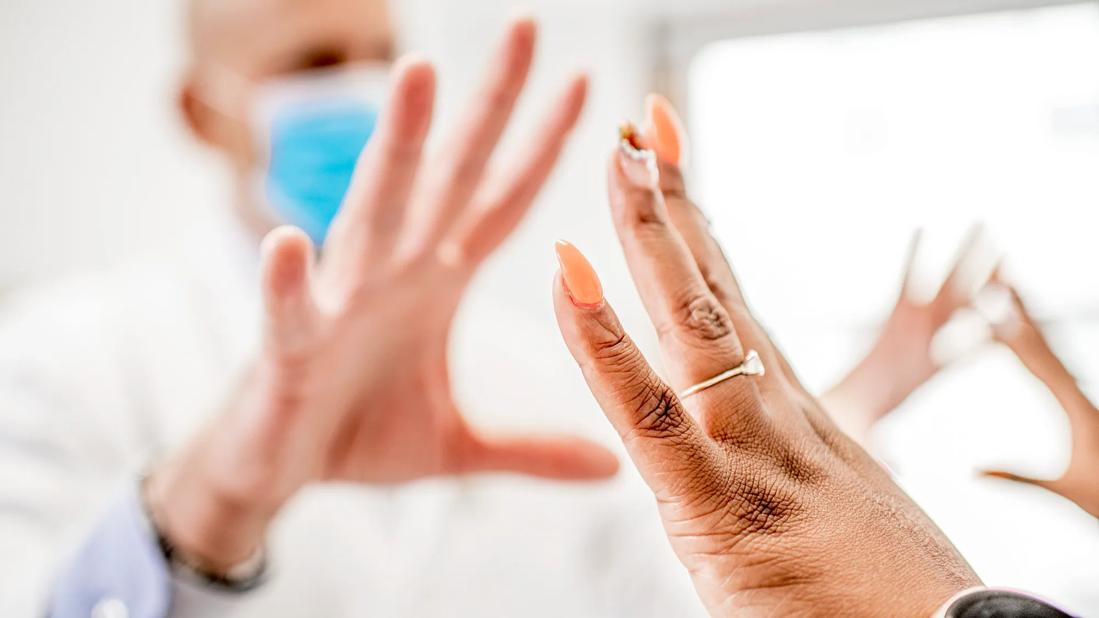Retrospective series characterizes post-COVID-19 POTS, outlines next research goals

Postural orthostatic tachycardia syndrome (POTS) appears to be a component of the emerging “long COVID” phenomenon in some people following even mild SARS-CoV-2 infection, new findings from Cleveland Clinic’s Neurological Institute suggest.
Advertisement
Cleveland Clinic is a non-profit academic medical center. Advertising on our site helps support our mission. We do not endorse non-Cleveland Clinic products or services. Policy
POTS is the most common autonomic dysfunction diagnosed in the United States, and is five times more common in women than men. It is characterized by excessive increase in heart rate with postural change from supine to standing without accompanying hypotension, along with potentially debilitating fatigue, weakness and exercise intolerance. Infection is a known trigger.
At the 2022 annual meeting of the American Academy of Neurology, Cleveland Clinic researchers presented findings from 39 patients with POTS who were seen following confirmed or strongly suspected COVID-19 in 2020 or early 2021.
“We knew when the pandemic started in March 2020 that we would see more POTS cases, although I don’t think we anticipated this level of magnitude,” says senior investigator Robert Wilson, DO, a neurologist in Cleveland Clinic’s Neuromuscular Center. Many of the early patients were healthcare workers, he notes. “They had enough knowledge and medical literacy to identify that something was wrong, that it wasn’t laziness or anxiety.”
He urges clinicians to “have their radar up” for these individuals among those who have had COVID-19, even if only mild cases. “The symptoms can be vague,” he says. “Patients might not have syncope, and often they have preexisting comorbidities.”
All but one of the 39 patients with POTS following COVID-19 had mild COVID-19 cases, and 32 (82%) were women. Their most common symptoms were the following:
Advertisement
These patients’ most frequent pre-existing comorbidities were chronic migraine (in 38%), inflammatory bowel syndrome (IBS) (23%), Raynaud’s phenomenon (18%) and fibromyalgia (13%).
Of the 33 who underwent tilt table testing, 22 (67%) had a positive result. Other tests included quantitative sudomotor axon reflex test (QSART), which was conducted in 17 and positive in eight (47%), and skin punch biopsy, which was done in 10 and positive in four (40%).
“Not everyone could have the same studies done because of insurance issues, COVID-19 restrictions and determinants-of-health issues,” Dr. Wilson explains. “The ideal situation would be if everybody got the same uniform testing. Short of that, we thought the best we could do was identify patterns.”
Indeed, several patterns emerged. The predominance of women aligns with that for POTS in general. “It’s very provocative,” Dr. Wilson notes. “Women tend to be very immunogenic and may have more of an inflammatory response in COVID-19, even when it’s mild.”
Also, the preponderance of “hyperexcitable” preexisting comorbidities (migraine, IBS, fibromyalgia) suggests that “the neural enervation and neural responses are very exquisite,” Dr. Wilson says. “You can imagine the perfect storm scenario of a prior hyperexcitability condition followed by exposure to an inflammatory state, which triggers this POTS physiology.”
It’s important to identify individuals with post-COVID-19 POTS as soon as possible, he adds. “We need research to figure out how to intervene early when patients report an early cascade of change,” he says. “We want to find out if there’s a critical window where we might be able to use particular medications to see if we can stop POTS progression.”
Advertisement
Anecdotally, Dr. Wilson sees differences between POTS that is and isn’t related to COVID-19. In contrast to the predominant orthostatic hypotension seen in other people with POTS, those with COVID-19-related POTS typically swing from highs to lows in blood pressure and heart rate. “Their bodies are much more revved up, in fight-or-flight mode,” he explains.
And patients with COVID-19-related POTS are less likely to have neuropathy. “I thought we’d find more abnormal skin biopsies,” Dr. Wilson says. “Instead, patients have more adrenaline, a hypervigilant state. They can’t sleep.”
While usual POTS treatments include hydration, salt, compression stockings and exercise, patients with COVID-19-associated POTS often also require a beta-blocker. Also, the exercise in post-COVID-19 POTS seems to be best focused on calming the body, such as with tai chi. “These patients need sleep hygiene, mindfulness work, wellness modalities,” Dr. Wilson says. “Not because they’re crazy, but because they’re in a hypersympathetic state.”
He and his colleagues plan to publish their findings after longer follow-up, focusing on the patients whose POTS was diagnosed using a tilt table. The team also plans to study which treatments work best. For now, their goal is raising awareness and encouraging clinicians to take these patients seriously. “These patients are telling us their stories very clearly,” Dr. Wilson concludes. “We need to pay attention.”
Advertisement
Advertisement

Patients report improved sense of smell and taste

Clinicians who are accustomed to uncertainty can do well by patients

Unique skin changes can occur after infection or vaccine

Cleveland Clinic analysis suggests that obtaining care for the virus might reveal a previously undiagnosed condition

As the pandemic evolves, rheumatologists must continue to be mindful of most vulnerable patients

Early results suggest positive outcomes from COVID-19 PrEP treatment

Could the virus have caused the condition or triggered previously undiagnosed disease?

Five categories of cutaneous abnormalities are associated with COVID-19